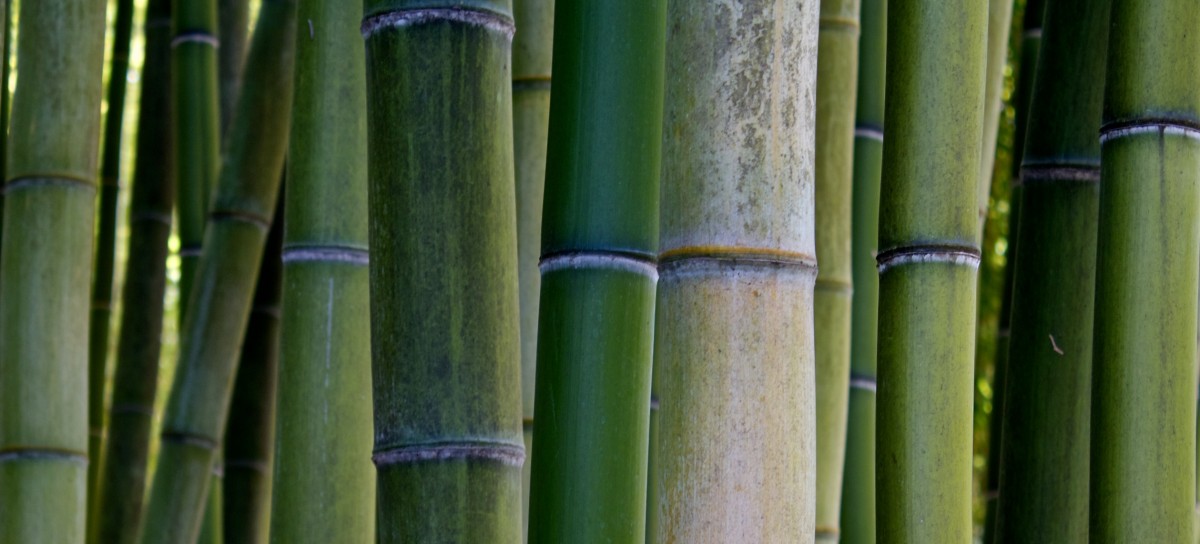May 16, 2016
Lynda Kiernan
Although often thought of as a forestry product, bamboo is a regenerative, perennial grass. Used for everything from soil regeneration, food, flooring, clothing, and furniture, bamboo yields 20 times more timber than trees planted on the same area, according to Resource Fiber.
Planted once, bamboo can be harvested every three to six years for decades. It has the ability to sequester five times more carbon and release 35% more oxygen than hardwood trees. It has a greater compression strength than concrete and the same strength to weight ratio as steel. Additionally, it is hearty and resistant to multiple stressors while requiring a low level of inputs, keeping production costs low.
As global forests become increasingly depleted and protected, the world is turning to alternative timber and fiber sources. There are 1250 species of the woody plant worldwide with a total global area of 14 million hectares, mainly across Asia, the Pacific, the Americas, and Africa, although East Asia and Southeast Asia have 80% of the world’s species and the largest bamboo forest area, according to a report issued by Southwest Forestry College in Kunming, Yunnan, China.
China is the fulcrum of the bamboo sector. There is evidence that China has used bamboo for the past 4,000 to 5,000 years. It has been used to make arrowheads, paper, pens, floor tiles, clothing and shoes, rope, and as a food. Today, China has more than seven million people employed in bamboo-related industries according to theInternational Network for Bamboo & Rattan. Furthermore, the association states that under the current Bamboo Development Plan in China (2013-2020) the total value of bamboo forests output is expected to reach $32 billion by the end of 2015, up 66.5% from 2011, and $48 billion by 2020.
To help meet growing demand from such a wide range of industries and uses, China is turning outward to Africa, where climate change, drought, and soil exhaustion are cutting into the output of other more input intensive crops. Last year China signed an agreement with Uganda to boost bamboo production in the country.
“Bamboo in China is used for water management, poverty alleviation and has a great economic potential on top of being a source of food,” said Mr. Zhang Jianlong, the China minister for state forest administration at the time of the signing, adding that the agreement will help create a channel for a higher level of Chinese institutional investment in Ugandan bamboo production, reports the Daily Monitor.
Under the terms of the agreement, China has a planned investment of US$6 million to be allocated in July 2016 to a range of agencies, commercial bamboo operations, research initiatives, and value addition in the supply chain.
In another sign of the growing viability of bamboo as a sustainable, eco-investment, last year the World Bankdoubled its investment guarantees for the Nicaraguan bamboo agribusiness and developer of commercial-scale bamboo plantations, EcoPlanet Bamboo Group, to $48 million. Launched in 2010, EcoPlanet Bamboo Groupacquires degraded land and converts to back to a healthy, productive agricultural operation through the establishment of independently certified, sustainable bamboo plantations. The operation’s Forest Stewardship Council-certified fiber is then exported to the U.S. and global timber companies for the production of paper, pulp, textiles, laminates, and renewable energy generation.
To date, the group has restored over 8,500 acres of degraded land and has sequestered 1.5 million tons of atmospheric carbon dioxide under the Verified Carbon Standard by the Rainforest Alliance, and has received gold-level validation by the Climate, Community and Biodiversity Alliance.
Troy Wiseman, EcoPlanet Bamboo Group’s CEO, said that the backing has “…given us the ability and confidence to more than triple our original investment in Nicaragua and move forward with other international expansions in both Southern and West Africa. We’re investing very significantly on research and development as we work with our Fortune-500 clients to help them transition from timber and fiber originating from the harvesting of natural forests…”

Let GAI News inform your engagement in the agriculture sector.
GAI News provides crucial and timely news and insight to help you stay ahead of critical agricultural trends through free delivery of two weekly newsletters, Ag Investing Weekly and AgTech Intel.




